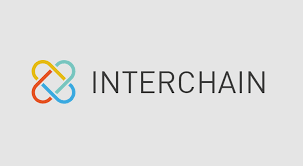MEV Explained - By Frens Validator
Frens Validator discusses MEV including good MEV and bad MEV.

Disclaimer - This is part of our outside perspective series. Curious Cosmonaut Research is not the author we are simply highlighting some good threads and perspectives on the Cosmos ecosystem with their permission. We also, therefore, do not guarantee their accuracy.
Author: Frens Validator
Source: Twitter Thread
Date: November 23, 2022
MEV is a trillion-dollar opportunity
Sadly most people still have no clue about it.
Here's everything you need to know 🧵👇
What is MEV?
MEV stands for “Maximal Extractable Value”.
It describes how much value one can extract from a block 🫰
Blockspace is limited.
There is also only a certain space for someone to extract value.
Let’s say you realize that $ETH gets traded for $1,000 on Uniswap and for $999 on Balancer.
This represents an arbitrage opportunity.
If you act quickly, you can realize this arbitrage opportunity 🚀
Now you execute a flash loan on AAVE: a transaction where you borrow $USDC without depositing collateral on AAVE, buy $ETH on Balancer & sell it for a higher price on Uniswap - all of this happens in the SAME block.
This is how you can extract risk-free money from ONE block
But if there is risk-free money to be made, also bad actors step in ☠️
Let’s stick to the example above: you realize that there is an arbitrage opportunity on Uniswap & Balancer.
Now you execute a transaction to take advantage of this arbitrage opportunity 💸
The problem: all transactions get collected in a so-called Mempool ♒️
The Mempool is a set of transactions where validators or miners pick up transactions and put them into a block.
They also have the power to decide in which order the transactions should be executed.
And here is the thing: all transactions are assumed to be public in the mempool. So, someone could realize that you are about to take advantage of an arbitrage opportunity 👁️
The user who sees this could now copy your transaction and pay a higher fee 🤯
That incentivizes the validator to prioritize their transaction, even though you tried to take advantage of the arbitrage opportunity in the first place.
Some people consider the first example, where you took advantage of an arbitrage opportunity, as “good” MEV...
since no other parties got harmed and you helped prices to get in sync on Uniswap & Balancer ✅
Now, let us dive deeper into an example of what people would consider as “bad” MEV: sandwich attacks 🥪!
Let's say you want to buy a massive amount of $ETH on Uniswap.
A user realizes this & copies your transaction + pays a higher fee to get his transaction processed first.
The price of $ETH increases, and some slippage comes in 📈
Because of this, you end up paying the “worst” price for $ETH of the tolerated range.
I.e., your tolerated range to buy $ETH is between $999 and $1002.
Effectively, you will always pay the” worst” price of $1002 since other market participants know your range.
Most of the time, so-called “bots” are executing these types of transactions on behalf of a user.
No wonder: “Bad” MEV has raised some concerns as users got negatively affected - aka the UX decreases.
That said, many protocols want to prevent the bad effects of MEV.
This is how the discussion around MEV got heated up 🔥
But how much value are we talking about here?
To give you a better understanding: Everything started on Ethereum as most of DeFi’s liquidity can be found there🫗
Generally, more DeFi activity (liquidity & trading volume) results in more MEV.
This is why MEV has mainly been a relevant topic on Ethereum.
At the time of writing (post-FTX meltdown), DeFi’s total TVL on Ethereum is $25.35 billion.
But when the TVL on Ethereum was higher, also more MEV extraction took place.
On Ethereum, around $1.9 billion in MEV has been extracted (pre-merge only).
This includes “good” and “bad” MEV such as 🥪attacks.
Our friends from Chorus One have published an incredibly useful tool to track pre-merge MEV extraction on Ethereum.
But MEV extraction has decreased since Ethereum’s DeFi TVL peaked in early November 2021. Back then, TVL on Ethereum was at around $109 billion.
So, MEV has been a very relevant topic on Ethereum because:
Tweet unavailable
The dark forest is a science fiction book. The book tells the story of “an environment in which detection means certain death at the hands of advanced predators”. You, the fellow Ethereum user, could become a victim of an advanced predator (i.e. an arbitrage bot) - yikes!
Summary: "Good" MEV is i.e. arbitrageurs, who take advantage of arbitrage opportunities and help prices to be in sync across different protocols. Some people consider MEV as "bad" MEV when we talk i.e. about sandwich attacks.
If you enjoyed this deep dive, please feel free to share the thread with your Frens



